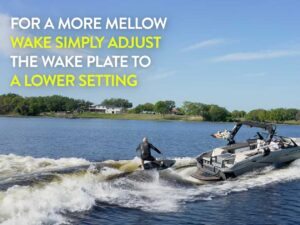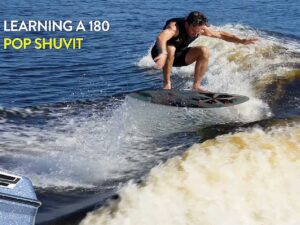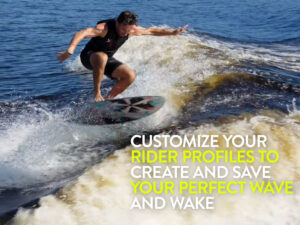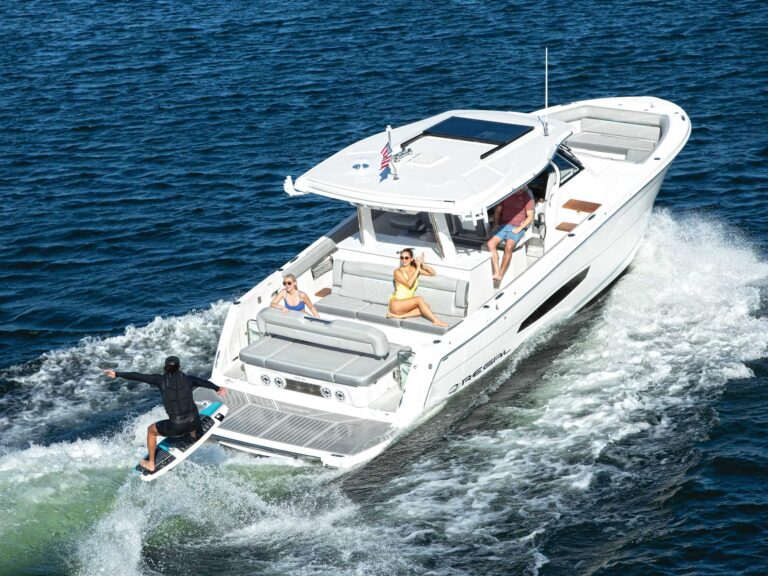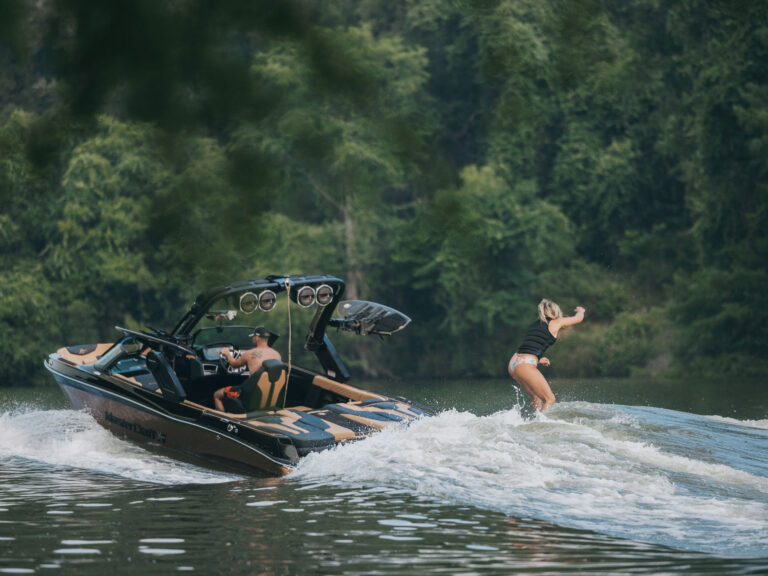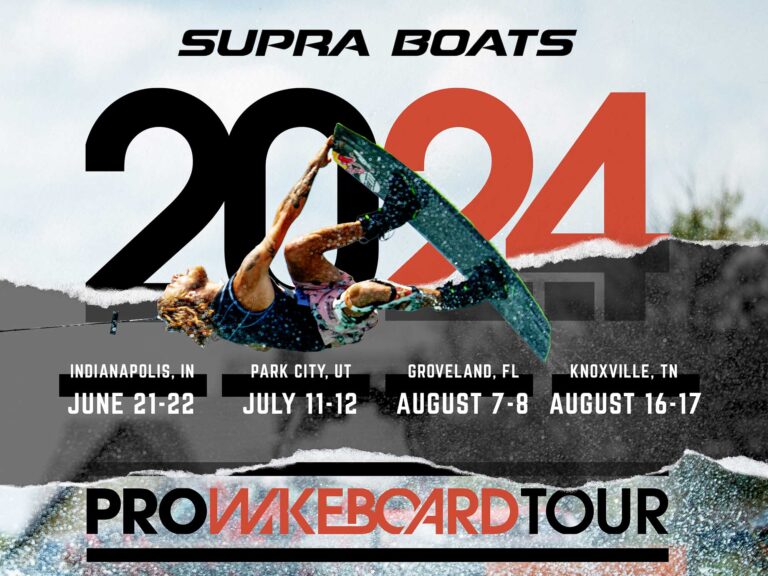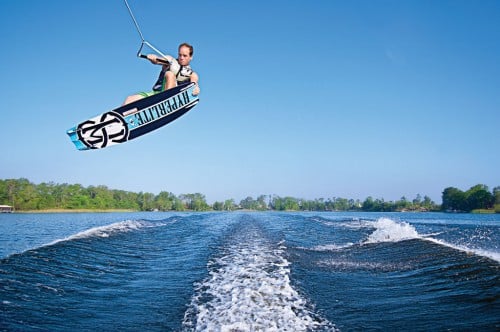
Teaching students how to get more out of their riding by doing less is the technique we focus on most at The Boarding School. Regardless of the rider’s ability level, we continually repeat the phrase: “Don’t forget to use a solid wake jump and then get into your trick.” It may seem elementary, but a relaxed yet solid wake jump is the foundation for almost every wake trick we do on our boards. In this wakeboarding how to, focus on these five fundamentals of a first-rate wake jump and employ them in every trick you try this summer. — Shaun Murray, The Boarding School
Photos: BillDoster.com
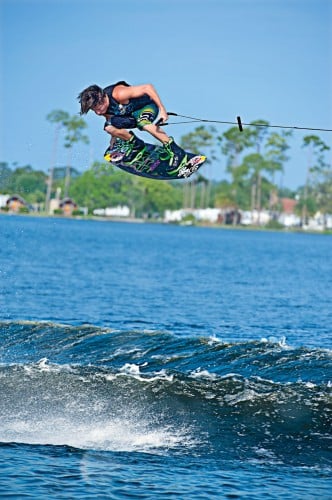
Keep the handle position consistent
Where you hold the handle is key to having both power and control. Letting the handle rise is a common mistake that will pull your upper body ahead of your lower body. Think of it this way: If you were to tie the rope to your body rather than hold the handle, you would tie it to your hips for the most relaxed ride. Keeping the handle low and close to your hips is the best way to keep the pull coming from the center of your body.
Adam Errington On Handle Position
— “Handle control is still something I stress on. In fact, I think about it every time I ride.”
— “Sometimes it’s awkward finding the perfect handle placement, but if you work at it, though, it will become second nature.”
— “It’s key to keep the handle low and close to your hip. It’s how you generate power, balance and muscle memory.”
Photos: BillDoster.com
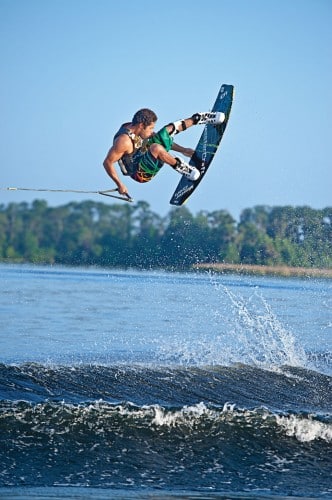
Balance your weight going up the wake
To get an even pop through your body at the wake, you need to have equal weight on both feet. To accomplish this, bend your knees evenly and keep your shoulders square to the horizon. Think about how you jump on a trampoline — proper position at the wake is very close to that.
Josh Palma On Balancing Your Weight At The Wake
— “I focus on keeping my hips in a level, upright position, which helps max out vertical pop and keeps me in control as I leave the wake.”
— “Although I get fairly inverted on this heelide melon 3, I leave the wake with my hips up and my weight evenly distributed, much like I would on a basic heelside air.”
Photos: BillDoster.com
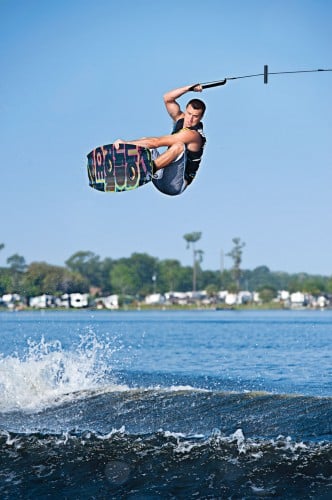
Spot your landing — don’t stare at it
It’s OK to look where you’re going to land, but don’t fixate on it. Once you have a good idea of where you’ll land, focus your eyes about 10 to 15 feet in front of you. Put simply, look where you want to go, not where you think you’ll fall.
Shawn Watson On Spotting Your Landing
— “Focus on getting solid pop, and start your rotation early so you can spot your landing midway through the olé toeside 540.”
— “Spotting your landing early also helps you rotate faster, which will let you add an extra 180 to this trick once you’re comfortable.”
Photos: BillDoster.com
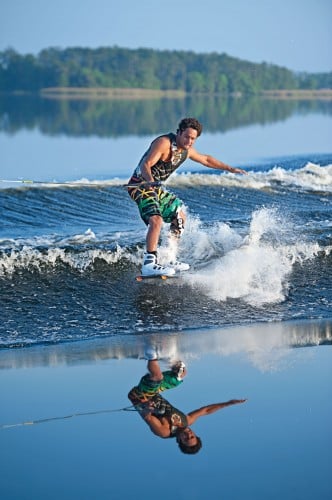
Stay in command when landing
When you land, don’t just give the handle to the boat so your arms are reaching forward. This will pull your weight over the front of the board and lead to the dreaded toeside edge catch. Instead, keep the handle in the same place it was when you left the wake. As you land, you can give a little tension to the boat, which makes for soft landings.
Josh Palma On Landing
— “Keep your chest and hips up and use your legs to help slow down your body on landings. This will take loads of pressure off your knees and back.”
— “Controlled landings begin in the air by spotting your landing early and staying oriented throughout the trick. Trampoline work helps sharpen these skills.”
— “Keep the handle close as you prepare to land a roll to revert. It will help you maintain your leverage against the boat and, consequently, your ability to land centered on your board.”
Photos: BillDoster.com
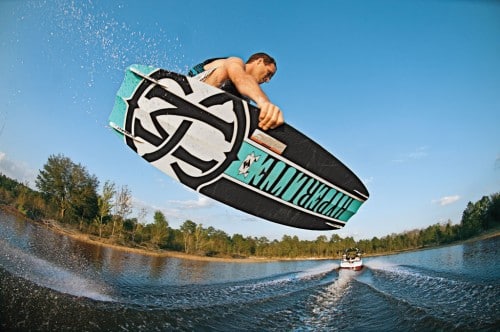
Maintain your direction — not the boat’s
Too often, riders try to take on the boat’s direction when landing rather than continuing in the direction they initiated at the first wake. This is especially true on toeside tricks. If you find yourself slipping out on landings, it’s a good sign you’re pointing the board in the wrong direction. In order for your fins to lock you into your landing, you need to line them up with your direction of momentum. Do this and you’ll give the end of every trick a smooth look and feel.
Shaun Murray On Maintaining Direction
— “Looking where you want to go — instead of staring at your landing — will help you maintain your
direction.”
— “Your direction into the first wake is the same direction you should ride away from the seond wake.”
— “Keep two hands on the handle through at least the peak of the wake. When you do let go with one hand, keep the handle close to your lead hip.”
Photos: BillDoster.com
